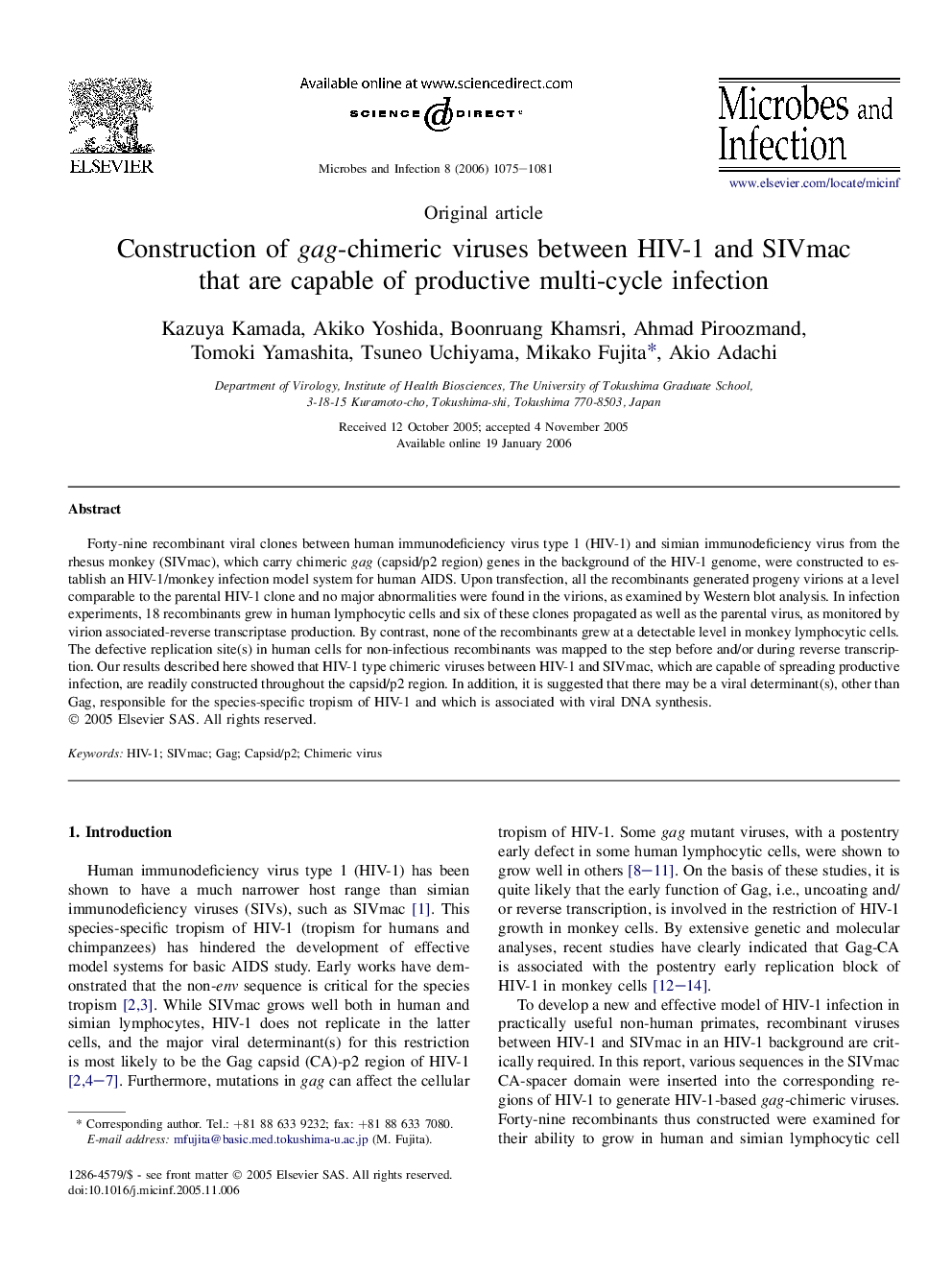| Article ID | Journal | Published Year | Pages | File Type |
|---|---|---|---|---|
| 3416074 | Microbes and Infection | 2006 | 7 Pages |
Forty-nine recombinant viral clones between human immunodeficiency virus type 1 (HIV-1) and simian immunodeficiency virus from the rhesus monkey (SIVmac), which carry chimeric gag (capsid/p2 region) genes in the background of the HIV-1 genome, were constructed to establish an HIV-1/monkey infection model system for human AIDS. Upon transfection, all the recombinants generated progeny virions at a level comparable to the parental HIV-1 clone and no major abnormalities were found in the virions, as examined by Western blot analysis. In infection experiments, 18 recombinants grew in human lymphocytic cells and six of these clones propagated as well as the parental virus, as monitored by virion associated-reverse transcriptase production. By contrast, none of the recombinants grew at a detectable level in monkey lymphocytic cells. The defective replication site(s) in human cells for non-infectious recombinants was mapped to the step before and/or during reverse transcription. Our results described here showed that HIV-1 type chimeric viruses between HIV-1 and SIVmac, which are capable of spreading productive infection, are readily constructed throughout the capsid/p2 region. In addition, it is suggested that there may be a viral determinant(s), other than Gag, responsible for the species-specific tropism of HIV-1 and which is associated with viral DNA synthesis.
